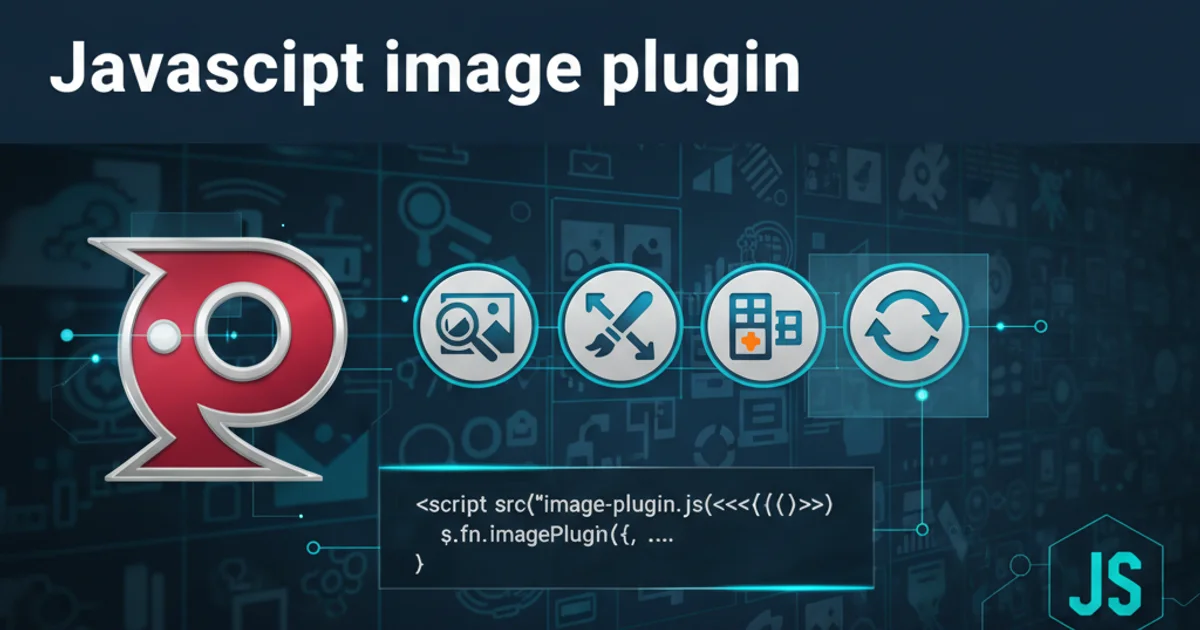Javascript image plugin
Categories:
Integrating JavaScript Image Plugins in Ruby on Rails 4

Learn how to seamlessly integrate and utilize various JavaScript image plugins within your Ruby on Rails 4 applications to enhance user experience with features like galleries, lightboxes, and drag-and-drop uploads.
Modern web applications frequently rely on rich media experiences, and images are a cornerstone of this. For Ruby on Rails 4 developers, integrating powerful JavaScript image plugins can significantly elevate the user interface and functionality of their applications. This article will guide you through the process, covering common integration patterns, asset pipeline considerations, and popular plugin choices, specifically tailored for Rails 4.
Understanding the Rails 4 Asset Pipeline
Before diving into specific plugins, it's crucial to understand how Ruby on Rails 4 manages front-end assets. The Asset Pipeline, powered by Sprockets, compiles and minifies JavaScript, CSS, and images, serving them efficiently. When integrating third-party JavaScript libraries, you'll typically place them in the vendor/assets/javascripts directory or use a gem that handles this for you. Your application.js manifest file then includes these assets, ensuring they are loaded in the correct order.
// app/assets/javascripts/application.js
//
//= require jquery
//= require jquery_ujs
//= require turbolinks
//= require_tree .
// Add your plugin here, e.g.:
//= require fancybox/jquery.fancybox
//= require dropzone/dropzone
Example application.js manifest file including third-party plugins.
application.js file.Common JavaScript Image Plugin Categories
JavaScript image plugins fall into several categories, each serving a distinct purpose. Understanding these categories will help you choose the right tool for your application's needs. We'll explore lightboxes/galleries, image uploaders, and image manipulation tools.
flowchart TD
A[User Interaction] --> B{Image Plugin Category?}
B -->|View Images| C[Lightbox/Gallery]
B -->|Upload Images| D[Image Uploader]
B -->|Edit Images| E[Image Manipulation]
C --> C1[Fancybox, Magnific Popup]
D --> D1[Dropzone.js, Uppy]
E --> E1[Cropper.js, Fabric.js]Decision flow for choosing a JavaScript image plugin category.
Integrating a Lightbox/Gallery Plugin (Fancybox Example)
Lightboxes and galleries are essential for displaying images in an elegant, interactive way. Fancybox is a popular choice for its ease of use and rich features. Here's how you might integrate it into a Rails 4 application.
1. Step 1: Add the Fancybox Gem
While you can manually add files, using a gem simplifies the process. Add fancybox-rails to your Gemfile.
2. Step 2: Bundle Install
Run bundle install in your terminal to install the new gem and its dependencies.
3. Step 3: Include Assets
Add the Fancybox JavaScript and CSS to your asset manifests. For JavaScript, add //= require fancybox to application.js. For CSS, add *= require fancybox to application.css (or application.scss).
4. Step 4: Initialize Fancybox
In your view or a dedicated JavaScript file, initialize Fancybox on your image links. Ensure your image links have a data-fancybox attribute or a specific class.
# Gemfile
gem 'fancybox-rails', '~> 2.1.5'
Adding the fancybox-rails gem to your Gemfile.
<!-- app/views/your_controller/index.html.erb -->
<%= link_to image_tag("thumbnail.jpg"), "full_image.jpg", data: { fancybox: "gallery", caption: "My awesome image" } %>
<%= link_to image_tag("another_thumbnail.jpg"), "another_full_image.jpg", data: { fancybox: "gallery", caption: "Another view" } %>
Example ERB code for Fancybox integration.
// app/assets/javascripts/your_script.js
$(document).on('turbolinks:load', function() {
$('[data-fancybox="gallery"]').fancybox({
// Options go here
buttons: [
"zoom",
"share",
"slideShow",
"fullScreen",
"download",
"thumbs",
"close"
]
});
});
Initializing Fancybox with Turbolinks compatibility.
$(document).on('turbolinks:load', function() { ... }); to re-bind events after page navigations.Integrating an Image Uploader (Dropzone.js Example)
For applications requiring file uploads, a robust JavaScript uploader can provide features like drag-and-drop, progress bars, and image previews. Dropzone.js is a popular choice for this.
# Gemfile
gem 'dropzonejs-rails', '~> 0.7.0'
Adding the dropzonejs-rails gem to your Gemfile.
<!-- app/views/photos/_form.html.erb -->
<%= form_for @photo, html: { multipart: true, class: "dropzone", id: "my-dropzone" } do |f|
# Your form fields here
# Dropzone will automatically find the form and handle uploads
end %>
HTML structure for a Dropzone.js enabled form.
// app/assets/javascripts/dropzone_config.js
Dropzone.autoDiscover = false; // Disable auto-discovery
$(document).on('turbolinks:load', function() {
var myDropzone = new Dropzone("#my-dropzone", {
url: "/photos", // Your upload URL
paramName: "photo[image]", // The name of the file param
maxFilesize: 5, // MB
addRemoveLinks: true,
headers: {
'X-CSRF-Token': $('meta[name="csrf-token"]').attr('content')
}
});
myDropzone.on("success", function(file, response) {
console.log("File uploaded successfully:", response);
// Handle success, e.g., add image to gallery
});
myDropzone.on("error", function(file, errorMessage) {
console.error("Upload error:", errorMessage);
// Handle error
});
});
Initializing Dropzone.js with CSRF token handling for Rails.